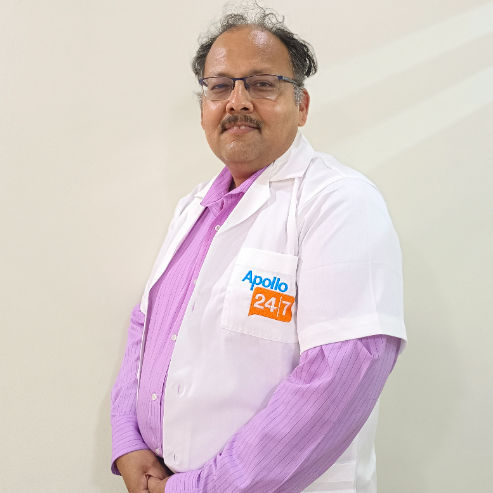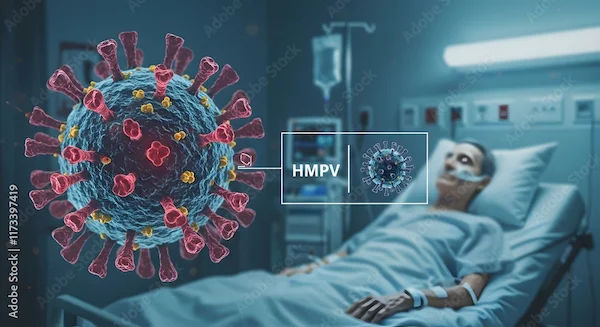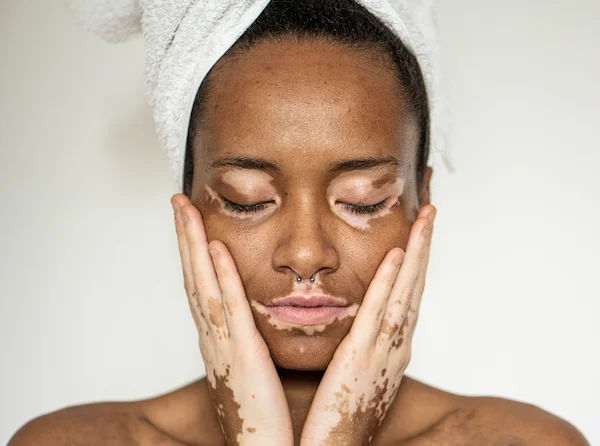Ophthalmology Eye Care: A Complete Guide
Discover how to protect and maintain your eyesight with this complete guide to ophthalmology and eye care. Learn about common eye conditions, prevention tips, vision correction options, and when to seek professional help. Stay informed, see clearly, and keep your eyes healthy for life.

Written by Dr. M L Ezhilarasan
Reviewed by Dr. Dhankecha Mayank Dineshbhai MBBS
Last updated on 28th Oct, 2025

Introduction
Your eyes do more than help you see—they connect you to the world. Yet many people wait until a problem appears before thinking about eye care. Ophthalmology is the medical speciality focused on eye health and vision, covering everything from routine comprehensive exams to advanced treatments and sight-restoring surgery.
In this easy-to-read guide to ophthalmology eye care, you’ll learn how your eyes work, what common symptoms mean, which conditions matter most, and practical steps you can take today to protect your sight. We’ll cover screening schedules for every age, prevention strategies for digital life, nutrition, UV protection, and the latest on vision correction and surgery. You’ll also discover when to seek urgent help and how to choose the right professional for your needs. Whether you’re dealing with dry eyes, exploring LASIK, managing diabetes, or simply planning, this guide brings together trusted information to help you care for your eyes with confidence.
Consult a Top Ophthalmologist for Personalised Advice
What Is Ophthalmology and Who Provides Eye Care?
Ophthalmology is the branch of medicine that diagnoses, treats, and prevents eye diseases. Ophthalmologists are medical doctors who complete medical school, a residency in ophthalmology, and often subspecialty training such as retina, cornea, glaucoma, or paediatrics. They provide full-spectrum eye care—from prescribing glasses to performing complex surgeries such as cataract or retinal operations.
Types of Eye Care Professionals
- Ophthalmologist: A physician who can diagnose complex eye diseases, prescribe medication, and perform surgery. See an ophthalmologist for medical eye problems, advanced diagnostics, or surgical treatment.
- Optometrist: A doctor of optometry who provides eye exams, prescribes glasses or contact lenses, detects many eye conditions, and manages non-surgical problems. Optometrists often co-manage care with ophthalmologists.
- Optician: A trained professional who fits and dispenses glasses and contact lenses based on a prescription.
- Unique insight: Think of eye care like dentistry—routine checks prevent bigger problems. Even symptom-free adults can have silent issues such as early glaucoma, so building a long-term relationship with your eye care provider pays off.
How Your Eye Works: Anatomy and Vision Basics
Your eyes function as precise optical systems. Light enters through the cornea, passes through the pupil in the iris, and is focused by the lens onto the retina. The macula, located at the centre of the retina, enables detailed and colour vision. The optic nerve then carries signals to the brain, where they are interpreted as images.
Common Vision Errors
- Myopia (short-sightedness): The eye is too long or the cornea too curved; distant objects appear blurred.
- Hyperopia (long-sightedness): The eye is too short or the cornea too flat; near tasks are harder.
- Astigmatism: The cornea or lens is irregularly shaped, causing distorted vision.
- Presbyopia: The lens stiffens with age, making close focus more difficult, usually after 40.
Digital lifestyles affect our “blink system.” Staring at screens reduces blinking, causing dry eye symptoms like burning or grittiness. The 20-20-20 rule—every 20 minutes, look at something 20 feet away for 20 seconds—helps relax the eyes and reduce strain.
- Unique insight: Think of your eye as a system of optics, plumbing, and wiring—each needs to work smoothly. Different eye tests check each system, such as pressure checks for fluid flow or OCT imaging for the retina.
Common Eye Symptoms and When to Worry
Most eye symptoms are minor, but some signal emergencies:
- Redness: Commonly due to dryness or allergies. Redness with pain or light sensitivity may indicate inflammation or infection.
- Pain: Severe pain or pain with nausea can suggest acute glaucoma or serious trauma.
- Discharge: Watery discharge often means viral infection; thick discharge points to bacterial causes.
- Blurry vision: Gradual blur is usually refractive; sudden blur could indicate a retinal or vascular issue.
- Flashes and floaters: New flashes or a dark “curtain” across vision can mean a retinal tear—seek same-day care.
- Unique insight: The “flashes, floaters, curtain” trio is an emergency warning—never ignore it.
Major Eye Conditions You Should Know
Cataract
Clouding of the natural lens, common with ageing. Symptoms include glare and gradual blurring. Surgery replaces the cloudy lens with a clear implant and is highly successful.
Glaucoma
A group of diseases damaging the optic nerve, often due to high eye pressure. It’s usually symptom-free until advanced—screening is essential, especially for those over 40 or with family history.
Age-related Macular Degeneration (AMD)
Affects central vision. “Dry” AMD progresses slowly; “wet” AMD can cause rapid vision loss but is now treatable with anti-VEGF injections.
Diabetic and Hypertensive Eye Disease
High blood sugar or blood pressure damages retinal blood vessels. Annual dilated exams, good control of HbA1c and blood pressure, and regular monitoring reduce risks.
Other Common Conditions
- Dry eye disease: Caused by reduced tear production or poor tear quality; treated with artificial tears and prescription drops.
- Allergic conjunctivitis: Itchy, watery eyes triggered by allergens; managed with antihistamine drops and avoiding triggers.
Eye Exams and Screening Schedules
Children
- Ages 3–5: Vision screening at least once to detect amblyopia (“lazy eye”).
- School age: Routine school or GP screenings; refer for full exams if concerns arise.
Adults
- Ages 20–39: Every 2–4 years if healthy; contact lens wearers annually.
- Age 40: Baseline comprehensive exam.
- Ages 40–64: Every 2–4 years; over 65: every 1–2 years.
- People with diabetes or high-risk family history need annual exams.
What’s in an Eye Exam
- Includes vision testing, eye pressure check, slit-lamp examination, retinal imaging, and visual field testing.
- Unique insight: OCT scans act like an MRI for the retina—quick, non-invasive, and extremely detailed.
Everyday Prevention and Eye Health Habits
Digital Eye Strain
Follow the 20-20-20 rule and use lubricating drops if needed. Blue light filters may aid comfort, but don’t prevent damage.
UV Protection
Always wear sunglasses with 100% UVA/UVB protection and a wide-brimmed hat outdoors.
Nutrition
Eat leafy greens, bright fruits and vegetables, and oily fish for nutrients like lutein, zeaxanthin, zinc, and omega-3s that support macular health.
Quit Smoking
Smoking increases the risk of cataracts and AMD—stopping is one of the best ways to protect your sight.
Safety
Use protective eyewear for DIY, sports, or hazardous work—most eye injuries are preventable.
Unique insight: Hydration and deliberate blinking keep eyes comfortable. Pair water breaks with “blink resets” to protect the tear film.
Vision Correction Options
Glasses and Contact Lenses
Both correct refractive errors effectively. Maintain strict lens hygiene and avoid sleeping or swimming in lenses unless approved.
Refractive Surgery
- LASIK: Quick recovery; uses a corneal flap.
- PRK: Surface treatment; suited for thinner corneas.
- SMILE: Small incision; minimal disruption.
Other options include orthokeratology (overnight reshaping lenses) and implantable lenses (ICLs) for high prescriptions.
- Unique insight: Your lifestyle matters—contact sports players may prefer PRK or SMILE over LASIK.
Treatments and Surgeries
Cataract Surgery
Removes the cloudy lens and replaces it with an intraocular lens (IOL). Patients often see improvement within days.
Glaucoma Treatment
Begins with pressure-lowering drops, laser therapy, or minimally invasive glaucoma surgery (MIGS).
Retinal Treatments
Anti-VEGF injections help preserve or improve vision in AMD and diabetic eye disease.
Corneal Conditions
- Corneal cross-linking can stabilise keratoconus, preventing the need for transplant surgery.
- Unique insight: Consistency with treatment and follow-ups is just as crucial as the treatment itself.
When and How to Seek Professional Care?
Choosing a Provider
Look for board-certified specialists, clear communication, and access to advanced imaging.
During Your Visit
Expect pupil dilation, and bring your medication list and previous prescriptions. Prepare questions about diagnosis, tests, and treatment options.
Teleophthalmology
- Video consultations can be useful for follow-ups and triage, though not a replacement for dilated exams.
- Unique insight: Book your next eye exam before you leave—link it with your annual health checks for consistency.
Conclusion
Your vision is precious—and protecting it is simpler than you might think. With regular check-ups, protective habits, and awareness of warning signs, you can preserve your sight well into later life. Advances such as laser surgery, anti-VEGF therapy, and AI-assisted screening are transforming outcomes, but prevention remains the strongest defence.
If you have diabetes or high blood pressure, managing these conditions supports your eye health. Stay on top of annual exams, maintain good nutrition, wear UV protection, and never ignore sudden vision changes. Whether it’s dry eyes, blurred sight, or a discussion about surgery, the right eye care specialist can guide you.
Take action today—book an eye test, follow healthy daily routines, and protect the vision that connects you to the world.
Consult a Top Ophthalmologist for Personalised Advice
Consult a Top Ophthalmologist for Personalised Advice

Dr. Smriti Nagpal
Ophthalmologist
13 Years • MBBS , MS (Ophthalmology)
New Delhi
Sunshine mediclinic, New Delhi
Dr. Padmini S
Ophthalmologist
4 Years • MBBS,MS
Bengaluru
Apollo Medical Center, Marathahalli, Bengaluru

Dr. Rajeev Gupta
Ophthalmologist
24 Years • MBBS, MS (Ophthalmology)
Ghaziabad
Om Eye & Gynae Centre, Ghaziabad

Dr. Vyankatesh Pharande
Ophthalmologist
25 Years • MBBS, MS (Ophthalmology )
Pune
PHARANDE EYE HOSPITAL & PHACO CENTER, Pune
Dr. Sumit Rastogi
Ophthalmologist
21 Years • MBBS,MS Opthamology
Kolkata
Trinity Clinic, Kolkata
Consult a Top Ophthalmologist for Personalised Advice

Dr. Smriti Nagpal
Ophthalmologist
13 Years • MBBS , MS (Ophthalmology)
New Delhi
Sunshine mediclinic, New Delhi
Dr. Padmini S
Ophthalmologist
4 Years • MBBS,MS
Bengaluru
Apollo Medical Center, Marathahalli, Bengaluru

Dr. Rajeev Gupta
Ophthalmologist
24 Years • MBBS, MS (Ophthalmology)
Ghaziabad
Om Eye & Gynae Centre, Ghaziabad

Dr. Vyankatesh Pharande
Ophthalmologist
25 Years • MBBS, MS (Ophthalmology )
Pune
PHARANDE EYE HOSPITAL & PHACO CENTER, Pune
Dr. Sumit Rastogi
Ophthalmologist
21 Years • MBBS,MS Opthamology
Kolkata
Trinity Clinic, Kolkata
More articles from General Medical Consultation
Frequently Asked Questions
What’s the difference between an ophthalmologist and an optometrist?
An ophthalmologist is a medical doctor who diagnoses, treats, and performs surgery for eye diseases. An optometrist provides eye exams, prescribes glasses or contact lenses, and manages many eye conditions, referring surgical cases to ophthalmologists.
How often should I have a comprehensive eye exam?
Children aged 3–5 should have at least one screening; adults need a baseline at 40 and every 1–2 years after 65, or more frequently if at risk.
Do blue light glasses protect my eyes?
Blue light isn’t harmful at screen levels. Filters may improve comfort, but frequent blinking and the 20-20-20 rule are best for digital eye strain.
When are eye floaters an emergency?
A sudden shower of floaters, flashes of light, or a curtain over your vision can indicate a retinal tear or detachment—seek urgent care immediately.
If I have diabetes, what should I do to protect my eyes?
Get annual dilated exams, keep your blood sugar, blood pressure, and cholesterol under control, and stay consistent with your care plan.




